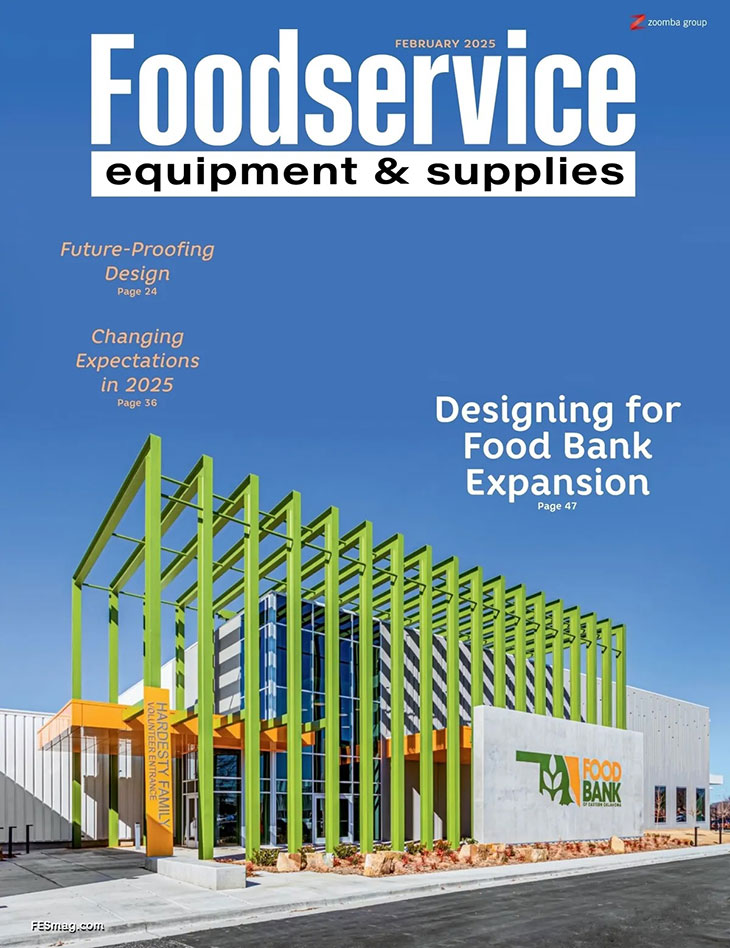Developing a good working relationship between foodservice operators and their supply chain partners takes time and understanding between the two parties. Unfortunately, no shortcut exists to expedite these efforts.
But during the NAFEM Annual Meeting and Management Workshop in San Antonio, Chef Hinnerk von Bargen, CHE, associate professor at the Culinary Institute of America's San Antonio campus, offered some insights into the psyche of chefs, what motivates them and the way foodservice equipment can better support some of the day's leading foodservice trends.
Before suppliers can provide chefs with what they need, it is important to understand the world view of these culinary professionals, von Bargen said. Along those lines, he offered a list of attributes that tend to apply to most chefs, including:
- Excited by the senses
- Enjoy the adrenaline rush
- Always work down to the wire, with a sense of urgency
- Like positive reinforcement and seek quick gratification
- Excel at common sense problem-solving
- Better at crisis management than prevention
- Strong sense of ownership when it comes to their kitchen
"When you know this, chefs are very easy to work with," von Bargen joked. "Our goal is not just to feed people. Food is a tool to satisfy and comfort people. Allow chefs to be a part of the experience and to see how happy people are and then they will be happy."
In addition, von Bargen describes chefs as being good at improvising. "We are good at making do with what we have."
Given that chefs are good at improvising, von Bargen encouraged members of the supply chain to be proactive when it comes to introducing new products and innovations. "Don't wait for chefs to tell you what they need," he said. "Surprise them. You have to make sure they know about the latest gadgets and innovations. Chefs are often way too busy to visit conferences to see what's new. Find a way to get it in front of them."
What Chefs Really Want
Trying to identify what chefs really want can be challenging and requires a trained ear. "We chefs want so much but are not so clear in saying what we want," von Bargen said.
That's why it is important for individual members of the supply chain to develop a solid working knowledge of the latest culinary trends and how chefs approach them both in terms of menu and execution. This understanding serves as the basis for the conversation between the two parties, as one side discusses what they want and the other finds a way to connect them to a meaningful solution.
To that extent, von Bargen listed a few attributes chefs want in their foodservice equipment today, including:
- Perfect Temperature Control: This includes impact-resistant induction burners, built-in true slow cookers, and built-in slow circulators.
- Easy Cleaning: Washing electric equipment can be challenging, von Bargen said. And when it comes to low and slow cooking techniques, including barbeque, wood smoking is desirable but also very hard to clean. In some instances, it can take a staff member 45 minutes to clean a piece of equipment used to smoke meats, von Bargen estimated. "If this could be eliminated with a self-cleaning smoker that would be nice," he added.
- Easy Storage: When it comes to oddly shaped equipment, von Bargen suggests including storage options that keep all of the parts together, making the unit easy to store and use.
- Multipurpose Equipment: von Bargen would like to see a unit that is a combination smoker, oven and warmer that is easy to use, preferably voice controlled. "Often, our hands are dirty in the kitchen. So being able to activate this using our voice would be helpful."
Given the popularity of cooking techniques that use intense heat, such as fire roasting and charbroiling, von Bargen identified several opportunities for equipment innovation in these areas, too. For example, eight-inch-wide kabob grills that char the meat but not the skewers are desirable. Also, units that cook with high heat without the heat loss would be beneficial. In the future, von Bargen would like to see an instant-use grill or oven that requires no preheating and is easy to clean.
Mobile food vending, such as food trucks and temporary foodservice set ups at farmer's markets or even street food vendors, represent an intriguing part of the industry that continues to evolve. To better service this segment, von Bargen offered a few thoughts:
- Small, compact, multi-purpose units. These items would use one motor to accomplish several tasks. For example, it can transition from blender to mixer to food processor to grinder.
- Take a more modular approach. von Bargen offered the example of a tilt skillet that converts to a grill by simply flipping over the unit.
- Rapid heating and cooling of specific equipment items. For example, develop a fryer or griddle that quickly gets up to temperature and cools just as fast to allow for safe transport when the service ends.




